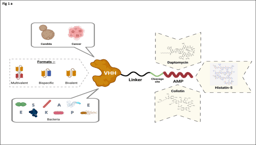Empowering local voices in shaping land use decisions
Published in Social Sciences and Earth & Environment
If you have to imagine what your children' life will be in 20 years, or your grandchildren' life in 40 years, how the landscape they will be living will look like and what kind of interaction they will have with Nature, which tools or media would you use?
This imagination, let’s call it scenario, could apply to a whole community, and it could be used to guide planning towards the desired future.
How to ensure a plurality of community voices can be represented, and that these voices can then be integrated into decision-making and planning?
The KESHO tool could guide you in building scenario through a participatory process, integrating traditional and local knowledge into quantitative and spatially explicit modeling. The framework was firstly developed through national and local case studies in Eastern Africa and then widely applied across Africa and beyond.
Our study published in Regional Environmental Change journal shows an application of KESHO to investigate how land use and climate pressures may reshape the unique Etosha landscape dryland, in Namibia. In the past few decades, Namibia has devoted a strong effort in increasing coverage of protected and conserved areas, but great challenges are foreseen for the future. In this study we investigated how the current development trend could lead to fulfill local development and conservation objectives, along with international goals for sustainability and biodiversity conservation, and in the long term the Africa Sustainability Agenda 2064. By using KESHO participatory scenario planning framework, we co-designed with local communities three plausible alternative future pathways, and the impacts these would imply: Business-as-Usual (BAU); Agriculture & Livestock Production; Conservation & Sustainability.
Outputs from this study demonstrate the value of a stakeholder-led approach in tackling conservation challenges and in planning for a sustainable future for an arid region heavily reliant on land-based livelihoods. The lesson learnt in Namibia case study can inform other countries facing similar challenges.
Follow the Topic
-
Regional Environmental Change

This is a multidisciplinary journal focusing on interactions between human and natural systems at local to global scales.
Introducing: Social Science Matters
Social Science Matters is a campaign from the team at Palgrave Macmillan that aims to increase the visibility and impact of the social sciences
Continue reading announcement





Please sign in or register for FREE
If you are a registered user on Research Communities by Springer Nature, please sign in